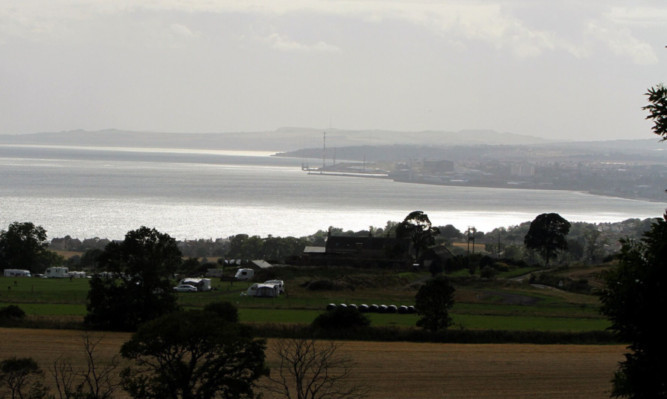The oil baron behind controversial plans to set fire to subsea coal seams off Fife says he suspects opponents to the energy-generation proposals have “misunderstood” the technology.
In an exclusive interview with The Courier, oil industry veteran Algy Cluff stressed that the proposals for Largo Bay and Kincardine were at a “very preliminary phase”.
However, he said the ambitions had to be considered in the context of Britain’s energy crisis with a need to find realistic alternatives to the country’s growing dependence on gas imported from the likes of Russia and Algeria.
Mr Cluff revealed that he intends to have a “courtesy” meeting with Scotland’s energy minister Fergus Ewing next week.
He said it was also his intention to have a meeting with Fife councillors, in particular Levenmouth member Tom Adams, to explain how the process works.
As revealed by The Courier this week, Mid Scotland and Fife MSP Claire Baker is pressing for a meeting of her own with Mr Ewing to discuss the Scottish Government’s role if the proposals for Largo Bay and Kincardine go ahead.
She has expressed grave concerns about the process, known as underground coal gasification (UCG), which she fears will pollute mine water.
Her comments echo those of Councillor Tom Adams, who said the Firth of Forth would be used as a test site for the technique, which involves drilling a 12-inch vertical borehole into a coal seam below the sea bed.
The seam is then flushed with oxygen and ignited with a burner with the resulting gas piped to onshore power stations.
Mr Cluff said UCG would address the UK’s future energy needs, avoid the use of fracking and enable the gas generated to be easily controlled by the supply of oxygen producing enough gas to fuel Britain cheaply and efficiently for hundreds of years.
He said: “You’ve got to put it in context. The British Isles are blessed with billions of tons of coal lying offshore beneath the North Sea.
“Britain is at something of a perilous situation where we are relying on imported gas from Algeria and Russia.
“Now we have the technology that can safely and quickly convert gas from our own coalfields and pipe it ashore.
“There would be nothing visible during the test stage apart from an exploratory rig. We would drill horizontally out into the North Sea and vertically into coal seams.
“We would then introduce oxygen into the coal seam and the coal gas would be piped out onshore.
“There would be no introduction of water or chemicals, unlike fracking. Once established a small plant would be required to separate the products. It would employ hundreds of people, I’d hope.”
Mr Cluff said Largo Bay was “highly prospective” due to its well recorded coal seams, adding: “The true potential would not be known until a test bore hole was carried out. Permissions for this could take a number of years.”
Mr Cluff said the technology was proven onshore but not offshore.
Fife Council has described the proposal as a large-scale development which would have a potentially significant impact on the area and concerns have also been expressed by environmental organisation Friends of the Earth Scotland.
The charity said it shares residents’ fears about the possible release of toxic chemicals from the process and called on the Government to concentrate on the development of renewable energy such as wind and wave power.
Fife is one of a number of areas being considered by Mr Cluff, whose company Cluff Natural Resources has already been given conditional licences by the Coal Authority.
